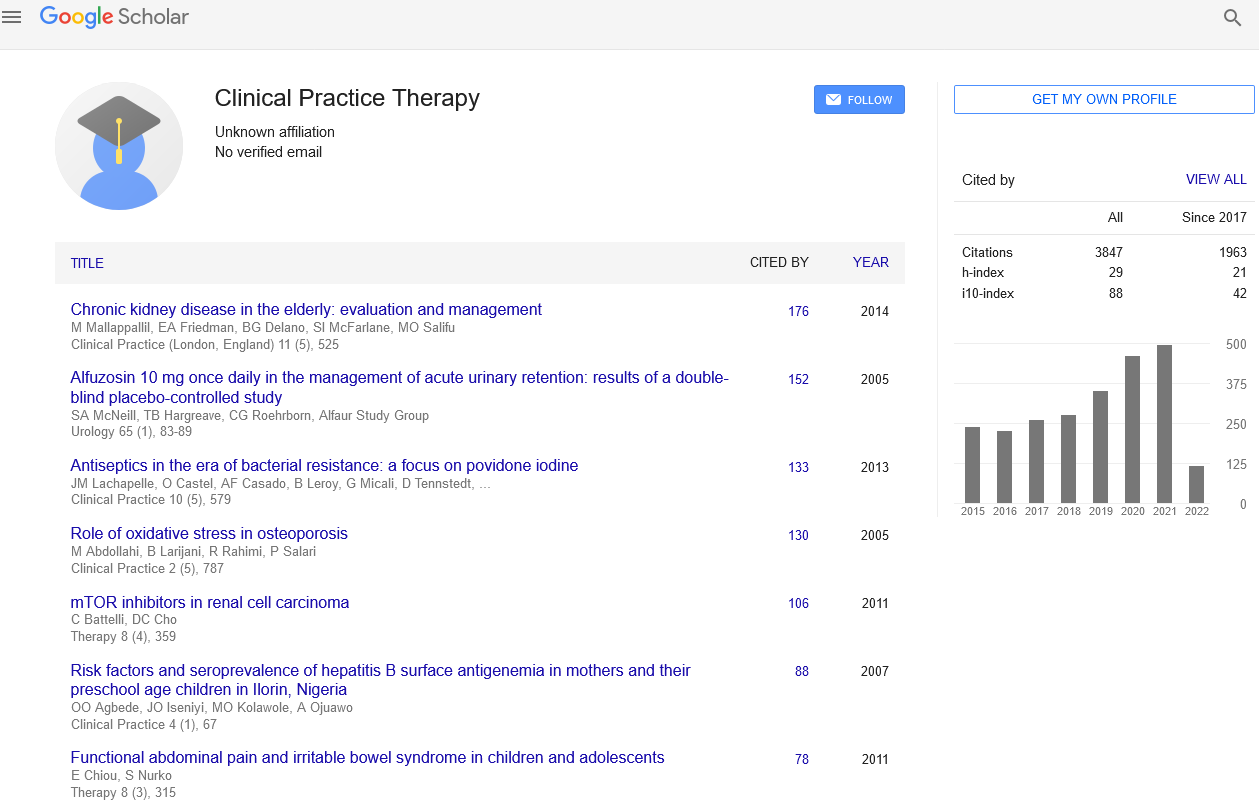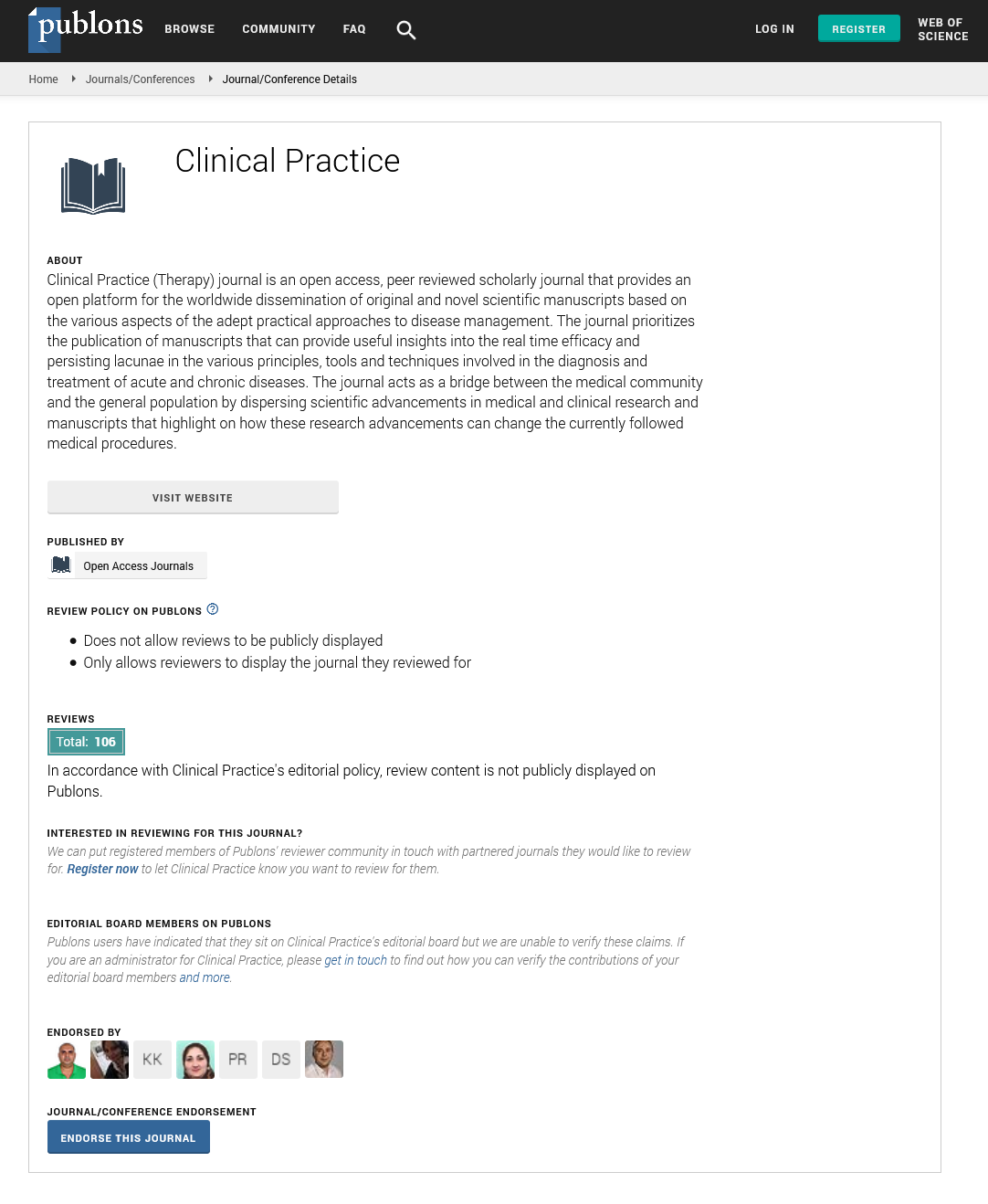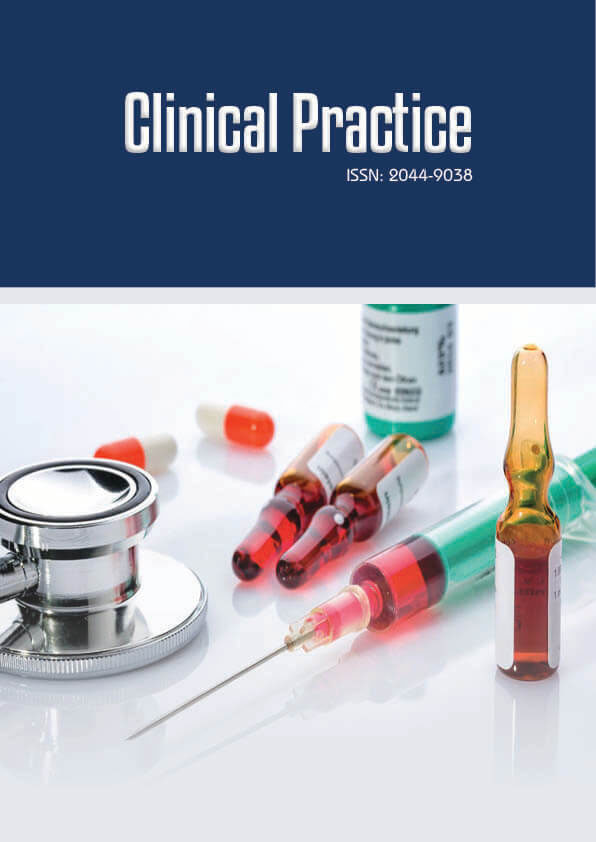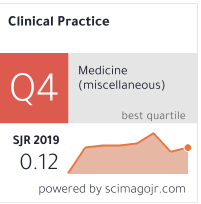Research Article - Clinical Practice (2016) Volume 13, Issue 2
Pharmacological Correction of the Results of Irradiation of the Parents for the Assimilation of Carbohydrates in the Small Intestine of Two Generations of their Offspring by the Help of Milk Thistle Fruits
- Corresponding Author:
- Olga V Storchylo
Odessa National Medical University, Ukraine
E-mail: alena-61@mail.ru, olha.storchylo@ukr.net
Abstract
Objective: The study of the assimilation of glucose and maltose in the small intestine of two generations of posterity of irradiated male rats received with a food the milled milk thistle fruits after irradiation. Methods: Exposition of male rats performed once by the help of telegamma-setting “AGAT-R1”, dose was 120 rad/min, field 20×20, distance from the source of irradiation to the field=75 cm, dose-0.5 Gy, exposure - 32 sec. Accumulating mucosa preparations (APS) produced by the method of Ugolev et al. APS incubated for 1 hour at t=37ºC in the oxygenated medium. As the incubation medium were used solutions 10 mmol/l of glucose and 5 mmol/l of maltose that were made on the Ringer solution pH 7.4. In all incubation medium the bile was added. The concentration of free glucose and M-glucose formed due to the hydrolysis of maltose was determined using method described in ref. Colorimetrically on photoelectrocolorimeter–CFC- 2MP, λ=625 nm. The statistical processing of the obtained data was conducted using “Primer Biostatistics” software. Results: The 2nd generation of the offspring from the males, which received milk thistle in the food immediately after irradiation, showed the high activity of the transport system for the free glucose and system providing transport of M-glucose produced by the hydrolysis of maltose both. This activity is higher than in the corresponding groups of the 1st generation (p<0,0001) and higher than corresponding data in all experimental groups of 2nd generation (except only group of the posterity of the male rats got milk thistle fruits before irradiation). Conclusion: The use by predecessors of milk thistle after irradiation leads to the radio corrective effect on the systems of transport of glucose and maltose both exactly in second generation of their posterity.
Keywords
Irradiation, posterity, small intestine, carbohydrates, pharmacological correction
Introduction
The increased radiation background now is one of the condition for the existence of society. The use of nuclear energy, testing of nuclear weapons leads to pollution of the environment and, consequently, to the effects of radiation on the human body. High doses of radiation lead to acute radiation disease and rapid death of the organism. Small doses of radiation depletes the adaptive system of body and lead to longterm effects for the next generations such as slower growth, a violation of the digestive system, increased frequency of death after birth, heart disease, untransparency of lens, violation of memory and the capacity for associative thinking and increased fatigue [1]. Complete elimination of the negative effects of exposure of predecessors in the population happens till 7-10th generation, but more than half of genetic diseases of the 1st generation appear in the 2nd [2]. Nevertheless, the process of research the phenomenon of transgenerational genomic instability in offspring of exposed parents is not completed yet [3,4]. Therefore, the search for ways of prevention and correction of disorders of the irradiated organism and its posterity continues.
In recent years, considerable attention is paid to herbal remedies, as a complex of the lowtoxic agents with a broad spectrum of action and mild prolonged effect [5-7]. One of these herbal remedies is the fruits of the milk thistle, which thanks to the high content of membrano trophic biologically active substances, is used to treat a variety of ailments - from arthritis and inflammation to cancer [8,9].
The last barrier between environment and intrinsic medium of organism is a small intestine – here we finish digestion of nutrients and absorb the final products into the blood. Therefore, any changing of the functional activity of small intestine because of environmental effects will lead to the disturbance of metabolic processes not only in tissues of the small intestine but also in the whole organism. The small intestine one of the first reacts to exposure: by the enterocytes desquamation, mucosal stratification, changes in the lipid membrane of enterocytes, violation of the conjugation of the processes of hydrolysis and transport of nutrients, leading to profound processes of assimilation disorders [10-12]. Therefore, the investigation of the effects of irradiation on the small intestine of the posterity of the exposure rats is still actually. Earlier in vitro conditions we have been shown the radio protective effect of total extract of milk thistle on the activity of the glucose transport system in the offspring of the 1st generation of irradiated hungry male rats [13]. It was interesting to find out whether this effect is stored in vivo – and later we have proved it for two generations of irradiated male rats, which got milled milk thistle fruits with a food before irradiation [14]. But no less, and perhaps more important than the prevention of effects of irradiation on the body is the correction of its effects - and from this point of view, it is interesting to study the radio corrective action of milk thistle fruits on the offspring of irradiated animals. Therefore, the aim of the work was the study of the assimilation of glucose and maltose in the small intestine of two generations of posterity of irradiated male rats received with a food the milled milk thistle fruits after irradiation.
Materials and Methods
Experiments were conducted on two-month male rats of line of Vistar by mass 60-70 gram – posterity of the onetime irradiated male rats and intact female rats. Experimental groups were kept on the standard diet of vivarium and were deprived of meal during 18-24 hours before an experiment. Totally were used 7 groups of posterity: 1st intact; 2nd and 3rd descendants of two generations of irradiated hungry by a dose 0,5 Gy males and intact females, 4th and 5th descendants of two generations from males, that were irradiated by a dose 0,5 Gy after taking meal (in satiety status) and intact females, 6th and 7th descendants of two generations from males, that were irradiated hungry by a dose 0,5 Gy and got 3 gr of milled milk thistle fruits with a food after irradiation, and intact females. Exposition of male rats performed once by the help of telegamma-setting “AGAT-R1”, dose was 120 rad/min, field 20×20, distance from the source of irradiation to the field=75 cm, dose-0.5 Gy, exposure - 32 sec. Accumulating mucosa preparations (APS) produced by the method of Ugolev et al. [15]. APS incubated for 1 hour at t=37ºC in the oxygenated medium. As the incubation medium were used solutions 10 mmol/l of glucose and 5 mmol/l of maltose that were made on the Ringer solution pH 7.4. In all incubation medium the bile was added. The concentration of free glucose and M-glucose formed due to the hydrolysis of maltose was determined using method described [16] colorimetrically on photoelectrocolorimeter – CFC-2MP, λ=625 nm. The statistical processing of the obtained data was conducted using “Primer Biostatistics” software.
Results and Discussion
Previously in vitro we had shown effects of irradiation of the exposed under different conditions male rats on their 1st generation of posterity [19]. It was shown the stabilization of activity of the processes of absorption of glucose in the small intestine of the 1st generation of the posterity of the male rats-predecessors which got milled milk thistle fruits with a food after the irradiation. Nevertheless, absolute data of these processes were significantly lower than data not only in the intact group but also in all experimental groups, yet parameters were within the active transport component (same). That is why especially interesting is the fact that the 2nd generation of the offspring from the males, which received milk thistle in the food immediately after irradiation, showed the high activity of the transport system for the free glucose and system providing transport of M-glucose produced by the hydrolysis of maltose both (TABLE 1). This activity is higher than in the corresponding groups of the 1st generation (p<0,0001), higher than corresponding data in all experimental groups of 2nd generation (except only group of the posterity of the male rats got milk thistle fruits before irradiation). So, use of the milled milk thistle fruits with a food by male rats’ immediately after irradiation leads to the stimulation of assimilation of carbohydrate substrates (both mono- and dimer) in the 2nd generation of their posterity – it means we detect the radio corrective effect of the remedy from milk thistle.
| Group of Animals | Glucose | Maltose | |
|---|---|---|---|
| First | |||
| 1. Intact | n =5 | 47,85±5,59* 11,7% |
42,71±2,31* 5,4% |
| 2. Posterity F1 | n =5 | x42,25±6,22* 14,7% |
42,67±1,95* 4,6% |
| 3. Posterity F2 | n =10 | xx40,35±4,58* 11,4% P1-3=0,032 |
31,77±3,95* 12,4% P1-3=0,0001 P2-3=0,0001 |
| Second | |||
| 1. Intact | n =5 | 47,85±5,59* 11,7% |
42,71±2,31* 5,4% |
| 2. Posterity F1 | n =5 | x51,97±1,50** 3% Px = 0,013 |
42,62±1,94** 4,5% |
| 3. Posterity F2 | n =5 | xx33,47±2,38** 7,1% P1-3=0,0001 P2-3=0,0001 Pxx=0,018 |
28,99±2,66** 9,2% P1-3=0,0001 P2-3 0,0001 |
| Third | |||
| 1. Intact | n =5 | 47,85±5,59* 11,7% |
42,71±2,31* 5,4% |
| 2. Posterity F1 | n =5 | ▪75,66±3,89** 5% |
▪70,59±3,88** 5,5% |
| 3. Posterity F2 | n =5 | ▪▪120,49±3,21*** 2,7% P1-3<0,0001 P2-3<0,0001 |
▪▪84,44±1,70*** 2% P1-3=0,011 P2-3<0,0001 |
| Fourth | |||
| 1. Intact | n=5 | 47,85±5,59* 11,7% |
42,71±2,31* 5,4% |
| 2. Posterity F1 | n =5 | ▪24,97±2,45* 9,8% P▪=0,008 |
▪19,26±0,68* 3,5% P▪=0,006 |
| 3. Posterity F2 | n =5 | ▪▪55,38±4,90 8,8% P1-2=0,006 P2-3<0,0001 P▪▪<0,0001 Pº=0,063 Pº=0,004 |
▪▪47,66±5,22 11% P1-2<0,0001 P2-3<0,0001 P▪▪<0,0001 Pº=0,034 Pºº=0,013 |
Under the parameters of accumulation presents the percentage of the scatters from the middle value
* - Data obtained earlier [17] used to compare
** - Data obtained earlier [18] used to compare
*** - Data obtained earlier [14] used to compare
x - the difference between the values in groups of the 1st generation of posterity from irradiated hungry (I) and in satiety status (II) male rats;
xx - the difference between the values in groups of the 2nd generation of posterity from irradiated hungry (I) and in satiety status (II) mail rats
▪ - the difference between the values in groups of the 1st generation of posterity from irradiated in satiety status got milk thistle fruits before irradiation (III) and got milk thistle fruits after irradiation hungry (IV) male rats and intact female rats
▪▪ - the difference between the values in groups of the 2nd generation of posterity from irradiated in satiety status got milk thistle fruits before irradiation (III) and got milk thistle fruits after irradiation hungry (IV) male rats and intact female rats
º- the difference between the values in groups of the 2nd generation of posterity from irradiated hungry (I) and got milk thistle fruits after irradiation hungry (IV) male rats and intact female rats
ºº- the difference between the values in groups of the 2nd generation of posterity from irradiated in satiety status (II) and got milk thistle fruits after irradiation hungry (IV) male rats and intact female rats
Table 1: Assimilation of substrates (mmol/l·mg) by the accumulation mucosa preparations from the mucosa of the small intestine of the 2-months-old rats – posterity of the 1st and 2nd generation of the irradiated by 0, 5 Gy hungry (I) and in satiety status (II) and in satiety status got milk thistle fruits before irradiation (III) and got milk thistle fruits after irradiation hungry (IV) males rats and intact females rats (М ± m).
Due to analyzing of the results of all experimental groups we can detect that the absolute parameters of absorption of both carbohydrate substrates in F2 from the male rats got milk thistle after irradiation is significantly higher than the same group of the posterity F2 from the irradiated in satiety status male rats (p=0, 004 and p=0, 013 for free glucose and M-glucose correspondingly). Also is interesting the fact of the stability of obtained results: the scatters from the middle value in the F2 from the male rats got milk thistle after irradiation are less than in the same group of the posterity from the hungry irradiated male rats: for M-glucose - 11% versus 12, 4% and for the free glucose – 8,8% versus 11, 4%. In the last case the scatters from the middle value are less than even in the intact group on the background of the higher absolute parameters: 8, 8% against 11, 7% – it evidences the positive effect of the milk thistle on the organization of the transport system in the F2 in this group of irradiated rats and, as a result, about the elimination of the negative effects of irradiation.
Due to the analysis of absolute parameters in all experimental groups we found some interesting facts:
- In the posterities of the hungry irradiated male rats there were no difference between intact group and F1 for both substrates (free glucose and M-glucose), but it was authentic decreasing of the parameters in F2 for both substrates.
- In the posterities of the irradiated in satiety status male rats also there were no difference between intact group and F1 for both substrates, but in F2 for both substrates it was authentic decreasing of the parameters, and for the free glucose it was even less than in F2 from the hungry irradiated rats.
- In the posterities from the male rats, which got milk thistle before irradiation, the real parameters authentic increased from the F1 to F2 and in F2 for both parameters were authentic higher than in the intact group. The results for F2 were the highest from all experimental groups for both substrates and there were fixed the lowest scatters from the middle value for all groups – it illustrates the stimulation and simultaneously stabilization by the milk thistle of the activity of the transport system for the free glucose and for the enzyme-transport conveyor for maltose as a precursor of M-glucose
- In the posterities from the male rats, which got milk thistle after irradiation, despite on the authentic decreasing of the rate of transport of both carbohydrate substrates in F1 in comparison with intact group (in 1, 9 times for free glucose and in 2, 2 times for M-glucose), in F2 it was authentic increasing of the parameters in comparison with F1.
Conclusions
Summing up we can say that the decreasing of the transport activity for both carbohydrates in F2 from the hungry and even from the in satiety status irradiated predecessors evidences the exhausting of adaptive systems responsible for the elimination of the effects of exposure of predecessors. In the same time the use of milk thistle before irradiation leads to the stable and even progressive radio protective effect in two generations of posterity, and the use by predecessors of milk thistle after irradiation leads to the radio corrective effect on the systems of transport of both substrates exactly in F2.
Considering the fact of the long elimination of the effects of irradiation of predecessors in their posterity (the effects of irradiation of parents may be found in the 7-10th generation of their posterity) our results are encouraging from the point of view of the possibility to stop the chain of the transfer of radiation-induced injury of genome on the earlier stage and in this way make their elimination speedy. Taking into account these facts the role of milk thistle in this process is the defining and promising for further study.
References
- DavydovaYuV. Modern aspects of the problem – irradiation and pregnancy.Ukr. Med.J.2(4), 17–21(1998).
- Lieberman A. Radiation and reproductive health. Sanct- Petersburg. 5(1), 225(2003).
- Agadganyan AV. Investigation of the transgenerational phenomenon of genomeinstability in the children- descendants of the radiation-exposed parents as a result ofaccident on Chernobyl nuclear power station. Moscow 20 (2008).
- Akhmadullina JR. T-radiosensitivity of peripheral blood lymphocytes in the first generation of descendants whose fathers were subjected to chronic radiation exposure. Moscow 23 (2014).
- Baliga MS, Katiyar SK. Chemoprevention of photocarcinogenesis by selected dietary botanicals. Photochem.Photobiol. Sci. 5(2), 243–253(2006).
- Koukourakis MI. Radiation damage and radioprotectants: new concepts in the era of molecular medicine. Br. J.Radiol. 85(1012), 313–330(2012).
- Rodeiro I, Delgado R, Garrido G. Effects of a Mangiferaindica L. stem bark extract and mangiferin on radiationinduced DNA damage in human lymphocytes and lymphoblastoid cells. Cell.Prolif. 47(1), 48-55(2014).
- Ladas, et al. A randomized, controlled, double-blind and pilot study of milk thistle for the treatment of hepatotoxicity in childhood acute lymphoblastic leukemia (ALL). Cancer. 116(2), 506–513(2009).
- Sreekanth N, Chapla A, Gagan D, et al.Silibinin inhibits ultraviolet B radiationinduced DNA-damage and apoptosis by enhancing interleukin-12 expression in JB6 cells and SKH-1 hairless mouse skin. Molecular. Carcinogenesis. 53(6), 471–479(2014).
- Ugolev AM. Evolution of digestion and principles of evolution of functions. Leningrad, Science. 543 (1995).
- Hygnyak SV, Bublyk AA, Kysyl EA, et al. Effect of irradiation on the structure and functional properties of the basolateral membrane of enterocytes of the small intestine. Rad.Biol. Rad. Ecol.39(6), 644–647(1999).
- KlevetaGYa, ChaykaYaP, Starycovich LS. Activity of enzymes of the antioxidant system of the enterocytes of the rats’ small intestine under the chronic effect of the low-intensive roentgen irradiation. Ukr. Biochem.J. 74(46) (addendum 2). 223(2002).
- Storchilo OV. Investigation of milk thistle fruits radio protective effect on the glucose transport in the irradiated rats posterity’s small intestine. Progress in Biology and Medicine. 12(2), 33–37(2008).
- Storchilo OV. Realization of radio protective effect of the milk thistle in the posterity of two generations of the irradiated rats. Med. Chem. 3(60), 13–16(2014).
- Ugolev AM, Zhigure DR, Nurks EE. Accumulating preparation of mucous membrane is a new method of research of the initial stages of transfer of substances through an intestinal wall. Physiol. Mag. of the USSR 56 (11), 1638–1641(1970).
- Scott TA, Melvin EH. The determination of hexoses with antrone. Analyt. Chem. 25, 1656–1658(1953).
- Storchilo OV. Functional activity of the small intestine from the two generations offspring of the hungry irradiated male rats. Odessa Medical J. 6(129), 13–16(2013).
- Storchilo OV. Radio protective effect of food in the assimilation of carbohydrate substrates by two generations of posterity from the radiation exposed male rats. Physiol. J. 1(61), 78–82(2015).
- Storchilo OV. Effect of the summary milk thistle extract and its fractions on the glucose transport into the small intestine of the irradiated rats′ posterity. Odessa. Medical J. 6(128), 21–24(2011).



